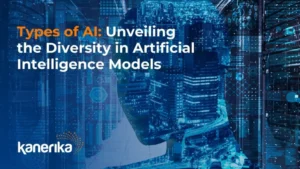What is Transfer Learning?
Transfer learning is a method in which competencies acquired from completing a particular target work are utilized in a related assignment.
For example, when you learn to ride a bicycle, you can transfer your skills (balance, pedaling, and steering) to riding a motorcycle, although some unique talents only apply to motorcycles.
Similarly, a previously trained image recognition model can be refined to recognize particular objects in new photos.
How Does it Differ from Traditional Machine Learning?
Conventional machine learning usually involves training and building a model on a dataset tailored to the target task. In contrast, transfer learning uses a pre-trained model typically trained on a large dataset and modified for the target task. This pre-trained model serves as a base; the last layers, unique to the source job, are replaced or modified for the target goal, while the first layers, which are in charge of learning low-level features, are frozen or adjusted.
Importance and Benefits of Machine Learning and AI
Transfer learning offers several advantages to AI and machine learning.
- Shorter Training Time: By applying the information from a pre-trained model to a related problem (the source task), we can reduce the time required to train a model for a new task (the target task).
- Better Performance: Compared to training a model from the start, it enables us to use an experienced model’s skills and information, which may result in a model performing better on the target task.
- Decreased Resources: Transfer learning may reduce the computing power required to train models when working with intricate, deep-learning architectures.
- Application to New Domains: Transfer learning makes it easier to apply machine learning methods to new domains where building big labeled datasets from the ground up might not be feasible.
Core Concepts
- Source Domain and Target Domain: The source domain represents the pre-trained model and its training data domain. The target domain represents the new task we wish to solve.
- Source Task and Target Task: The pre-trained model was initially taught to solve the problem known as the source task. The target task is the new issue we hope to resolve through transfer learning.
Types of Transfer Learning
There are several ways to transfer learning depending on how the source and target tasks and data distributions relate.
- Inductive Transfer Learning: The most popular kind of transfer learning is inductive, in which the tasks at the source and the target are similar but not identical. Fine-tuning allows the pre-trained model to fit the goal job. For example, a model trained for general object identification can be modified to recognize particular automobile models in pictures.
- Transudative Transfer Learning: In this case, the data for the source and target tasks have different distributions, but both the source and target tasks are related. Strategies like domain adaptation fill up the disparity between the data distributions. An example is applying a sentiment analysis model trained on social media material to examine customer reviews exhibiting distinct language patterns.
- Unsupervised Transfer Learning: In this case, the source task can be unsupervised (where learning patterns in data are from unlabeled data), while the target task is supervised (where learning occurs from labeled data). The knowledge derived from the unlabeled data in the source task improves the performance of the supervised learning model in a target task.
Key Approaches and Techniques
- Fine-tuning a Pre-trained Model: In this method, the pre-trained model’s weights are modified to suit the target goal better, usually concentrating on the final layers that are unique to the source work. Since the earliest layers record more general features, they are frequently left unaltered as they include helpful information that may be applied to various activities.
- Feature Extraction Methods: The pre-trained model is used as a feature extractor. A new model trained on the target task receives its feature set from the pre-trained model on the source task, which is then extracted. This method works on the pre-trained model’s feature learning capabilities without requiring extensive architecture tuning.
- Multi-task Learning: Multi-task learning refers to a strategy whereby a single model is trained with multiple related tasks. Unlike single-task learning or domain adaptation, it utilizes a single model rather than separate models for every task to learn the general commonalities for the functions.
- Domain Adaptation Techniques: Domain adaptation strategies bridge the gap when the source and target data distributions differ significantly. These methods may include learning to map between the two domains or altering the source data to approximate the target distribution.
Challenges and Solutions
Although it has many advantages, there are some drawbacks as well:
- Data Discrepancy Between Source and Target Domains: Notable disparities in the source and target variables distributions may hamper the efficacy of transfer learning. Methods such as domain adaptation can help reduce this problem.
- Negative Transfer: Sometimes, the performance of the target work is adversely affected by the knowledge transferred from the source task. To prevent negative transfer, careful choice of the pre-trained model and suitable fine-tuning techniques are essential.
- Balancing Transfer and Learning: It is crucial to balance using previously learned information and making adjustments to fulfill the unique needs of the target work. Methods like fine-tuning, which concentrate modifications on the later layers of the trained model, make this balance possible.
Tools and Frameworks for Transfer Learning
Prominent deep learning frameworks such as PyTorch and TensorFlow provide rich support for transfer learning. For Its applications, these frameworks offer easily useable pre-trained models on a range of tasks (such as natural language processing)
- TensorFlow: TensorFlow provides loading, fine-tuning, functions, and features for pre-trained models such as Inception and MobileNet.
- PyTorch provides a wide range of pre-trained models and ease-of-use tools for transfer learning via the Torchvision library.
The framework always depends entirely on personal taste, project requirements, and syntactic competence. Both offer a variety of tools in transfer learning or deep learning and continue to evolve.
Success Stories: Case Studies of Transfer Learning
Transfer learning is progressing significantly in several areas:
- Healthcare: Transfer learning improves medical image analysis tasks like disease identification and drug discovery. Pre-trained models can be modified to evaluate CT scans, X-rays, and other medical pictures for early diagnosis and treatment planning.
- Autonomous Vehicles: Transfer learning is essential to recognize objects in autonomous vehicles. It is possible to fine-tune models developed on big image datasets to identify specific items on the road, such as traffic signs, and vehicles.
- Natural Language Processing: Transfer learning is one of the main pillars of NLP progress. Pre-trained models like BERT and GPT -3 are employed for tasks like text summarization, machine translation, and sentiment analysis.
These are a few instances of the several industries in which transfer learning is applied.
Conclusion
Transfer learning is now a vital technique in machine learning and artificial intelligence. The utilization of current information and the acceleration of model creation facilitates the efficient resolution of complex issues. Transfer learning will surely open the door for even more revolutionary developments in AI as the field develops and realizes its full potential for the good of society.
Share this glossary


